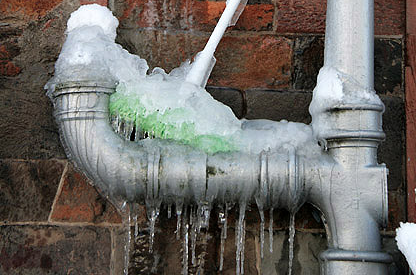This post directly below about 6 Ways to Prevent Frozen Pipes is truly compelling. You should read it.

Winter can wreak havoc on your plumbing, particularly by freezing pipelines. Below's how to prevent it from happening and what to do if it does.
Introduction
As temperatures decline, the threat of frozen pipelines boosts, possibly causing pricey repairs and water damages. Understanding exactly how to avoid frozen pipelines is essential for house owners in cold environments.
Comprehending Icy Pipes
What causes pipes to ice up?
Pipes freeze when subjected to temperature levels below 32 ° F (0 ° C) for expanded periods. As water inside the pipes ices up, it expands, putting pressure on the pipeline walls and potentially creating them to burst.
Dangers and problems
Icy pipelines can result in water supply interruptions, residential property damages, and pricey repair work. Burst pipes can flood homes and cause comprehensive structural damage.
Signs of Frozen Pipeline
Identifying icy pipelines early can avoid them from rupturing.
Exactly how to identify icy pipelines
Try to find reduced water flow from taps, unusual smells or noises from pipes, and visible frost on subjected pipes.
Avoidance Tips
Protecting prone pipes
Cover pipelines in insulation sleeves or utilize warm tape to secure them from freezing temperatures. Focus on pipes in unheated or external locations of the home.
Home heating techniques
Maintain indoor areas effectively warmed, especially locations with pipes. Open up cabinet doors to permit warm air to circulate around pipes under sinks.
Shielding Exterior Pipes
Garden tubes and exterior taps
Separate and drain pipes yard hoses before winter months. Mount frost-proof faucets or cover outdoor taps with insulated caps.
What to Do If Your Pipelines Freeze
Immediate activities to take
If you think frozen pipelines, maintain taps available to alleviate pressure as the ice melts. Utilize a hairdryer or towels soaked in hot water to thaw pipelines gradually.
Long-Term Solutions
Architectural changes
Take into consideration rerouting pipes far from exterior wall surfaces or unheated areas. Add additional insulation to attics, basements, and crawl spaces.
Updating insulation
Invest in high-quality insulation for pipelines, attics, and walls. Appropriate insulation assists maintain regular temperature levels and minimizes the threat of icy pipes.
Verdict
Protecting against icy pipelines calls for proactive actions and fast feedbacks. By recognizing the reasons, indications, and preventive measures, home owners can protect their pipes during cold weather.
5 Ways to Prevent Frozen Pipes
Drain Outdoor Faucets and Disconnect Hoses
First, close the shut-off valve that controls the flow of water in the pipe to your outdoor faucet. Then, head outside to disconnect and drain your hose and open the outdoor faucet to allow the water to completely drain out of the line. Turn off the faucet when done. Finally, head back to the shut-off valve and drain the remaining water inside the pipe into a bucket or container. Additionally, if you have a home irrigation system, you should consider hiring an expert to clear the system of water each year.
Insulate Pipes
One of the best and most cost-effective methods for preventing frozen water pipes is to wrap your pipes with insulation. This is especially important for areas in your home that aren’t exposed to heat, such as an attic. We suggest using foam sleeves, which can typically be found at your local hardware store.
Keep Heat Running at 65
Your pipes are located inside your walls, and the temperature there is much colder than the rest of the house. To prevent your pipes from freezing, The Insurance Information Institute suggests that you keep your home heated to at least 65 degrees, even when traveling. You may want to invest in smart devices that can keep an eye on the temperature in your home while you’re away.
Leave Water Dripping
Moving water — even a small trickle — can prevent ice from forming inside your pipes. When freezing temps are imminent, start a drip of water from all faucets that serve exposed pipes. Leaving a few faucets running will also help relieve pressure inside the pipes and help prevent a rupture if the water inside freezes.
Open Cupboard Doors
Warm your kitchen and bathroom pipes by opening cupboards and vanities. You should also leave your interior doors ajar to help warm air circulate evenly throughout your home.

Do you enjoy more info about Preventing and dealing with frozen pipes? Make feedback below. We would be happy to know your opinions about this write-up. We are looking forward that you come back again in the near future. Don't hesitate to pause to promote this post if you enjoyed it. I truly appreciate reading our article about Prevent Frozen Pipes .
Call Today